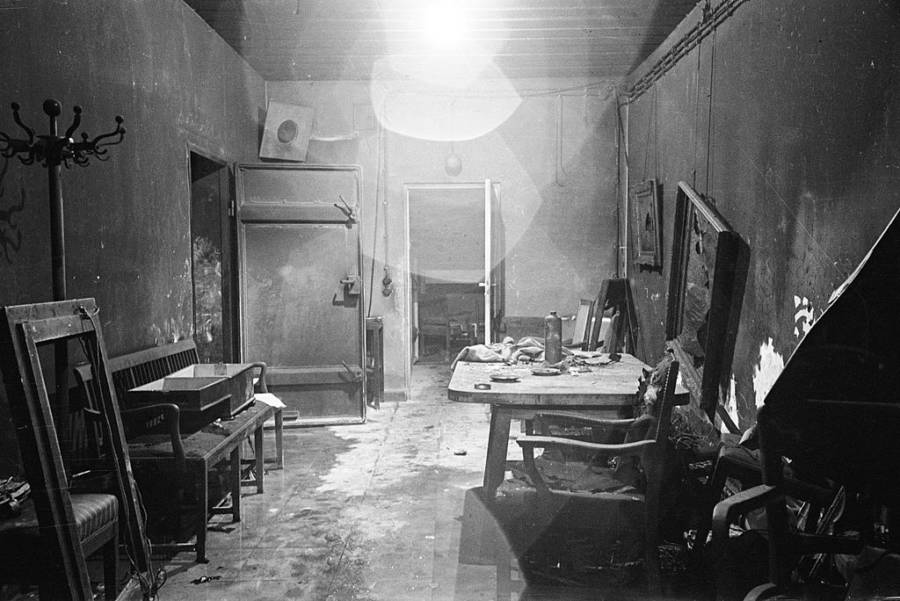Museum With Replica Of Hitler’s Bunker Unveils New Exhibit On Nazis’ Rise To Power

William Vandivert/The LIFE Picture Collection/Getty ImagesFuhrer Adolf Hitler’s command center conference room partially burned out by SS troops and stripped of evidence by invading Russians, in bunker under the Reichschancellery after Hitler’s suicide.
For a long time after World War II, talking about Adolf Hitler was a sort of taboo in Germany.
People would pay tribute to the Holocaust’s six million Jewish victims, discuss the brutal concentration camps and analyze the war as a whole — but focusing singularly on the man at the epicenter of it all seemed almost like validation, and was astutely avoided.
But this has begun to change in recent years, notably with the recent recreation of a room in the bunker where the Nazi leader spent his final days as well as the first to-scale model of the place — commonly called the Führerbunker — in its entirety.
The set accompanies a new Berlin exhibit that strays away from the classic “What happened?” and tries to investigate the “Why?”
The permanent show, titled “How could it happen?” opened in May at the Berlin Story Museum. It takes visitors from the notorious dictators childhood in Austria, through his unsuccessful painting career, his time as a World War I soldier, and all the way to his suicide on April 30, 1945.
Read more here.
“Little Pompeii” Uncovered By Archaeologists In France

Archeodunum via Smithsonian
Archaeologists in France have discovered a Roman neighborhood dating back to the first century A.D., and they’re calling it “Little Pompeii.”
“We’re unbelievably lucky. This is undoubtedly the most exceptional excavation of a Roman site in 40 or 50 years,” said Benjamin Clement, leader of the dig, according to Smithsonian.
One of the things that makes the site so exceptional, and accounts for its nickname, is the fact that it appears to have been abandoned following a series of devastating fires. These fires both destroyed the site and helped preserve it by “carbonizing wooden beams and baking the bricks between them.”
Dig deeper at Smithsonian.





